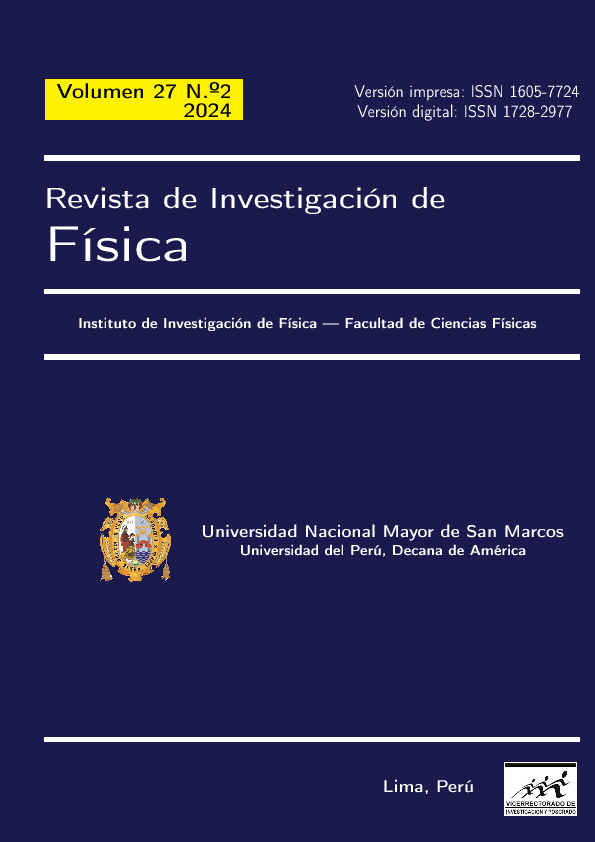Analysis of deforestation in the Matahuayo-Tahuayo sector (Loreto) using images from TM, ETM+and OLI sensors during the period 2007-2015
DOI:
https://doi.org/10.15381/rif.v27i2.28263Keywords:
Chlorophyll-a, surface temperature, linear trend, wavelet transform, interannual variabilityAbstract
The concentration of chlorophyll-a in the oceans is a reliable indicator of phytoplankton biomass that
plays an important role in controlling the marine ecosystem. Here, we investigate the interannual
variability and trends of sea surface temperature (SST) and chlorophyll a (Chl-a) concentration in the
region bounded by the 1 mg m−3 isobath of Chlorophyll-a between northern and central Peru (latitudes 5°-16°S) of the Peruvian Sea, are studied from 2003 to 2021 using daily values from the MODIS
sensor database on board the Aqua satellite. In this region between 11°–16°S there is a statistically
significant moderate to intense cooling (≈-0.08°C decade−1) while for Chl -a there is a statistically
significant moderate cooling (≈0.4 mg m−3 decade−1) throughout the entire study region . Based on
the Mann-Kendall test, the pixels of statistically significant trends (95% confidence interval) of the
interannual anomalies of Chl-a and SST are highlighted, these pixels are averaged in time series where
the results indicated that produced similar negative trends, where Chl-a showed a trend of -0.076 mg
m−3 decade−1 on average and SST showed a trend of -0.047 °C decade−1 on average over 2003–2021.
The integrated wavelet spectra of the PC1 principal components of the Chl-a and SST anomalies
present significant variation on interannual time scales, centered on approximately 4.4 and 3.5 years
respectively. Our results show that a substantial fraction of the interannual variability of Chl-a in the
study area can be described by the first two EOF modes that explain 29.4% and 23.4% of the variance,
and SST can be described by only an EOF mode that explains 93.9% of the variance respectively. The
integrated wavelet spectra of the PC1(Chl-a) and PC1(TSM) records exhibit significant variation on
interannual time scales, centered on approximately 3.5 years respectively. The wavelet cross-correlation
between the Chl-a and SST time series is evident with a period T ≈ 3.5 years and a phase shift or
opposite phase of 180° between 2017-2019. In 2007-2011 there was a high correlation between periods
of 3 and 4 years, despite not being in phase.
Downloads
Published
Issue
Section
License
Copyright (c) 2024 Michel Choccña, Dante Espinoza, Joel Rojas, Jhon Guerrero, Rolando Badaracco

This work is licensed under a Creative Commons Attribution 4.0 International License.
THE AUTHORS RETAIN THEIR RIGHTS:
a. The authors retain their trademark and patent rights, as well as any process or procedure described in the article.
b. The authors retain the right to share, copy, distribute, perform and publicly communicate the article published in the Revista de Investigación de Física (for example, place it in an institutional repository or publish it in a book), with an acknowledgment of its initial publication in the Revista de Investigación de Física.
c. The authors retain the right to make a subsequent publication of their work, to use the article or any part of it (for example: a compilation of their works, notes for conferences, thesis, or for a book), provided that they indicate the source. of publication (authors of the work, journal, volume, number and date).














